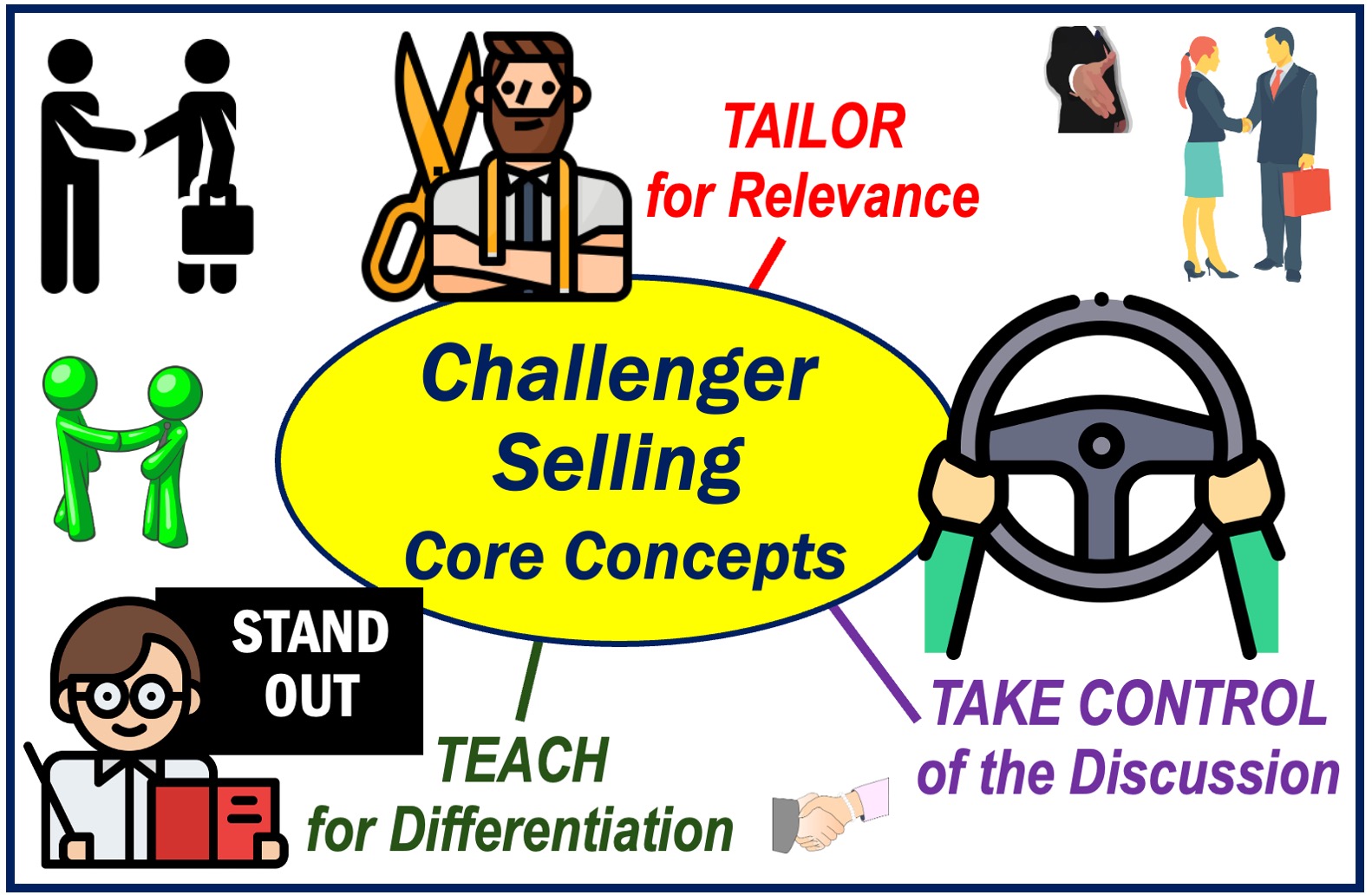Do you use a sales approach that emphasizes teaching, tailoring, and taking control of the sale conversation? If so, you practice Challenger Selling or The Challenger Sales Model – you are a Challenger Seller.
This sales method was introduced by Matthew Dixon and Brent Adamson in their 2011 book ‘The Challenger Sale’ and has become popular in the sales world for its effectiveness in complex sales environments. Matthew Dixon, who holds a Ph.D. in Political Economy from the University of Pittsburgh, and Brent Adamson, who holds a Ph.D. in Sociology from the University of Texas at Austin, are American authors and business professionals known for their work in sales methodologies.
The Challenger Sales Model is commonly used in Business-to-Business (B2B) sales.
Coursera.org says the following about this sales method:
“The Challenger sales methodology involves challenging a potential customer’s beliefs by introducing new information and insights. Rather than listing all the benefits a product or service can offer, the Challenger salesperson defines a unique customer problem and presents the product or service as a solution.”

The Core Concepts of Challenger Selling
-
Teaching
As a Challenger Seller, you educate your customer or prospect. A prospect is somebody who you believe can turn into a paying customer.
From this point onward in the article, the term “customer” also includes “prospect” and vice-versa.
Instead of just discussing products or services, you provide insights about the customer’s business and industry.
This involves challenging the customer’s current way of thinking and presenting new ideas that can lead to better outcomes. The goal is to position yourself as a knowledgeable advisor rather than just a vendor.
-
Tailoring
If you practice challenger selling, you recognize that every customer is different. You recognize this by emphasizing the importance of tailoring your sales pitch to the specific needs and characteristics of the customer.
This means understanding the customer’s business, their pain points, and their goals. Pain points are specific problems or challenges that customers face and need solutions for.
By customizing the approach, you can make your message more relevant and compelling.
-
Taking Control
As a Challenger Seller, you take control of the conversation. This does not mean that you have to be aggressive, but rather you confidently guide the discussion. You are also assertive when necessary.
You may have to push back when your customer has misconceptions or is hesitant about a solution that could benefit them. Your aim is to drive the conversation toward a mutually beneficial outcome.

The Challenger Salesperson
In their research, Dixon and Adamson identified five types of salespeople:
- the Hard Worker,
- the Lone Wolf,
- the Relationship Builder,
- the Reactive Problem Solver,
- and the Challenger.
They found that Challengers were the most successful, especially in complex sales situations. If you are a challenger salesperson, you should have the following characteristics or qualities:
-
Insightful
You bring valuable insights to the table, helping customers see their business from a new perspective.
-
Assertive
You are not afraid to push back and challenge the customer’s thinking. This may sound risky, but if your timing is right and your information is compelling, it can work wonders.
-
Tailored Approach
You customize your sales pitch to the specific needs and situations of each customer.
-
Educator
You teach your customer something new, providing value beyond the product or service that you are selling.
What About You?
The Challenger Sale methodology isn’t a magic bullet. It requires a certain type of person.
Are you comfortable with a more assertive approach? Do you possess strong analytical and communication skills? If so, you will likely make an excellent challenger salesperson.
Benefits of Challenger Selling
-
Builds Stronger Relationships
By educating and challenging customers, you can build stronger relationships based on trust and respect. Customers are more likely to value somebody who helps them improve their business rather than just trying to sell them something. This sales approach tends to lead to higher customer satisfaction and loyalty.
-
Sets You Apart from Others
Challenger Selling sets you apart from your competitors. While others may focus on relationship-building or problem-solving, you, as a Challenger, stand out by offering unique insights and confidently guiding the sales process.
-
More Sales
Research has shown that the Challenger approach is highly effective, particularly in complex sales scenarios where the buying decision involves multiple stakeholders and higher stakes.
Final Thoughts
Challenger Selling flips the script on traditional sales approaches. It is a powerful approach that combines teaching, tailoring, and taking control to drive sales success.
By challenging your customers to think differently and providing valuable insights, you can build stronger relationships, differentiate yourself from competitors, and achieve better sales outcomes.
Whether you are a seasoned sales professional or new to the field, understanding and applying the principles of Challenger Selling can help you become more effective and successful in your sales career.
Video – What is Challenger Selling?
This video comes from our sister YouTube channel – Marketing Business Network. It explains what “Challenger Selling” is using easy-to-understand language and examples.
